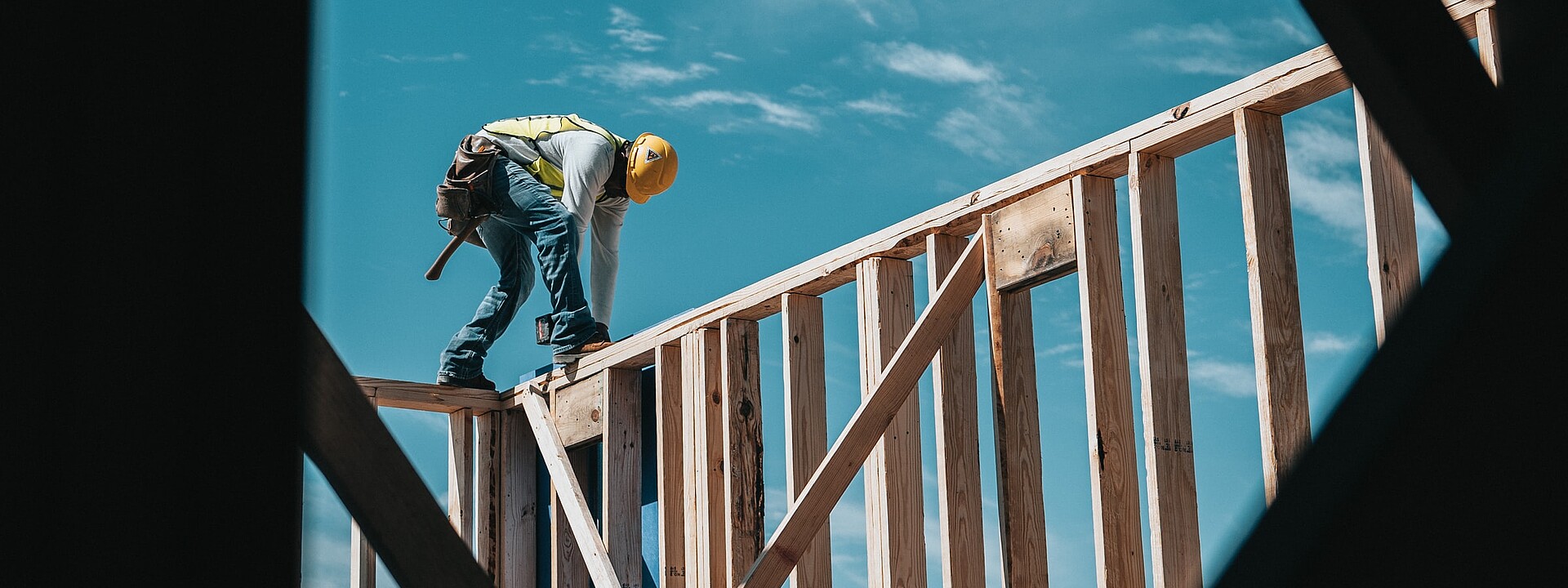Switzerland is an ideal location for the circular economy in construction

More and more players from a wide range of industries are recognizing the circular economy as one of the possible solutions to overcoming the climate crisis and avoiding impending resource bottlenecks. How far along is the transition to the circular economy in the Swiss construction industry?
The Swiss economy is in the middle of a transformation process. More and more actors from business and politics are recognizing the circular economy as a practicable solution for overcoming the climate crisis and avoiding impending resource bottlenecks. According to the first representative study by the Bern University of Applied Sciences on the status of the circular economy in Switzerland, around 12 percent of companies have anchored circular business activities in their business model. Concrete activities primarily include the reduction of material consumption and environmental pollution in the production process. The study comes to the conclusion that Switzerland, with its innovative strength, is an ideal location for implementing circular measures and thus gaining competitive advantages. The study also shows that there are major industry differences in how the transformation is progressing. The electronics, pharmaceuticals and automotive sectors in particular are progressive in terms of the degree of innovation and the cross-company spread of circular approaches.
In the construction industry, around 14 percent of companies have implemented circular business activities. The authors of the study see hurdles for further dissemination in the fact that the organizational implementation is complex and the availability of financial resources and the corresponding demand can vary greatly from region to region, especially in the construction sector. Another perceived hurdle was low awareness and concerns about profitability, according to another survey of 105 construction industry stakeholders.
Circular Economy Benefits
The ecological advantages of circular buildings are obvious. The construction industry is extremely resource-intensive and is responsible for over 80 percent of all waste in Switzerland. Around 50 percent of the CO2 emissions of an average building arise during the construction phase and the subsequent renovations. However, these material costs, waste and emissions can already be minimized in the planning phase. The consideration of the different life cycles of the different material layers of a building plays a central role. The ability to be dismantled is determined by whether the materials used are recyclable and modular and whether the individual elements are screwed, glued or plugged together.
But how great is the impact of the circular economy in economic terms? More and more companies are getting initial insights based on completed projects. Hall 118 in Winterthur and the conversion of Müllerstrasse 16/20 in Zürich are the first examples of successful cooperation between a wide range of players along the value chain. Science is also concerned with the question of profitability. Madeleine Kindermann shows in her master’s thesis that a recyclable construction reduces the effort and that the market value exceeds the value of a comparable, “linear” built object by +9.6% despite increased construction costs (+13%). Crucial for the positive effect of the recyclable construction is a precise determination of the future repair costs as well as the optimization of the replacement cycles of the building layers. Such information must be recorded in a standardized way in order to exploit the full potential. Digital tools such as Madaster make this possible through data transparency and analysis of resource-related information over the entire life cycle of a building.
The potential of the circular economy in construction is great. It is gratifying that politicians want to further strengthen the circular economy in Switzerland. The parliamentary initiative 20.433 proposes concrete resource-saving requirements for buildings in the planning, materialization and dismantling. The time for this is pressing. In order to meet the climate targets, in addition to regulatory incentives, there needs to be demand for resource-saving construction and the use of recyclable products. This change is primarily initiated in the strategic planning by the client. This accelerates the use of recyclable products that can conserve resources, for example with innovative technologies such as the ability to bind CO2 in concrete from Neustark or the standardized construction profiles made from used plastics from UHCS. Last but not least: Collaboration and cross-company thinking is crucial to sustainably implement the transition to a new economic system in the construction industry. The Circular Building Initiative (CBI) Booster from Innosuisse therefore promotes existing circular projects and brings together a wide variety of players from the industry to use synergies and develop new solutions. On January 19, the first four projects were awarded. This was a first impulse in the process from the idea to the market.
Source: https://circularhub.ch
Published by CVTI